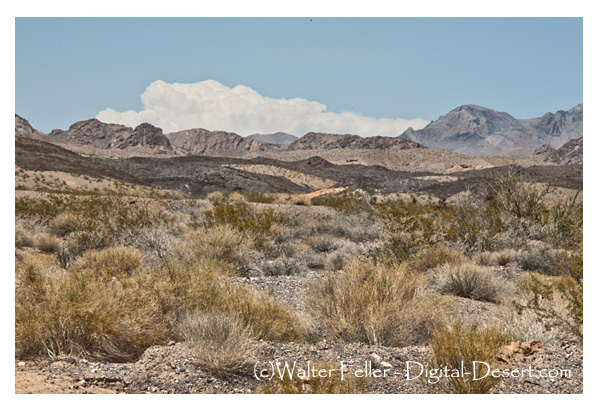--
Once Upon A Time

It is hard to imagine that during the Paleozoic Era (570 – 225 million years ago) much of the American Southwest was covered by shallow seas. However, fossil impressions of marine creatures in limestone and dolomite reveal the ancient beginnings of many sedimentary rocks. Throughout this period, fluctuating seas deposited thousands of feet of sediment, then retreated, exposing these layers to erosion. Different layers of marine deposits can be seen in banded mountains throughout the desert.
During the Mesozoic Era (225 – 65 million years ago) mountains were uplifted, revealing the Paleozoic layers. Evaporating bodies of water left behind salt (halite), calcium (gypsum), and many other evaporates that have been mined by humans for hundreds of years for industrial and domestic use. Rivers and transient streams carried great amounts of eroded material into the lowlands.
The climate became even more arid than it is today, expanding great belts of sand dunes. Jurassic winds carried the sand, creating the cross-bedding patterns still evident in the Aztec sandstone found in Red Rock Canyon National Conservation Area (NCA), Valley of Fire State Park, and Lake Mead NRA. It continues into Arizona and Utah where it is called Navajo sandstone. Red, beige, and even white, this sandstone has a propensity for fanciful erosion by wind and water. Spectacular arches can be formed. Beehives, goblins, and castles appear to the human imagination in other rock formations.
The beginning of the Cenozoic Era (65 million years ago – present) heralded another tectonically active period. Several different types of faulting deformed the layers of sediment and the metamorphic rock beneath. Normal faults produced vertical lifting and dropping, while strike-slip faults shifted blocks laterally. Thrust faults folded older layers over younger deposits, producing miles of horizontal displacement. This topsy-turvy construction can be seen at the Keystone Thrust Fault at Red Rock Canyon NCA and in the Muddy Mountains of Lake Mead NRA.
Previous - Next